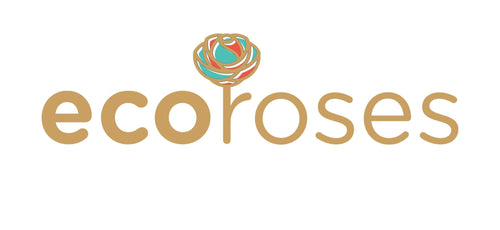How Flowers Have Influenced Art, Fashion, and Culture
Flowers aren’t just nature’s prettiest creations-they’re also among its most powerful. Throughout history, flowers have carried deep meaning and inspired some of the greatest achievements in art, fashion, and culture. From Renaissance masterpieces to Paris runways, their delicate beauty and bold symbolism continue to shape human creativity and expression.
And whether you're channeling that creativity through oil paint or a couture gown-or simply want to bring some of that timeless floral charm into your daily life-you can always explore nature’s finest arrangements at flowers that have influenced art, fashion, and culture.
In this article, we’ll explore the many ways in which flowers have transformed societies, shaped aesthetics, and left a permanent mark on human civilization.
🌸 Flowers in Art: More Than Just a Pretty Subject
🌼 1. Ancient Symbolism
In ancient cultures like Egypt and Greece, flowers were more than decorative-they were sacred symbols. The lotus in Egyptian frescoes represented the sun, rebirth, and the afterlife. In Greek and Roman mosaics, roses and laurels signified power, victory, and divine love.
🎨 2. The Floral Renaissance
During the Renaissance, flowers were everywhere-from devotional paintings to scientific botanical drawings. Artists like Leonardo da Vinci and Albrecht Dürer studied flowers for both beauty and scientific accuracy.
In Dutch Golden Age still life paintings, tulips, lilies, and irises symbolized wealth, mortality, and transience. These artworks weren’t just about beauty-they were meditations on life itself.
Fun Fact: Tulips once caused an economic bubble in the 17th century Netherlands, known as “Tulip Mania.”
🌹 3. Impressionism and Beyond
In the 19th and 20th centuries, flowers became subjects of emotional depth. Artists like:
-
Claude Monet: Painted water lilies that reflected his changing perception of reality and emotion.
-
Georgia O’Keeffe: Magnified flowers to monumental proportions, focusing on femininity and inner form.
-
Van Gogh: Captured raw emotion through sunflowers and irises.
Flowers have continued to appear in modern art, street murals, abstract compositions, and digital installations-proof of their timeless influence.
👗 Flowers in Fashion: Petals on the Runway
Floral motifs are a permanent fixture in fashion, reinvented each season to reflect mood, era, or cultural moment.
🌺 1. Historical Embroidery and Textiles
From 16th-century French brocade to 19th-century Victorian gowns, floral embroidery was a mark of elegance, femininity, and status. These patterns were hand-stitched or printed with great care, often using exotic blooms imported from Asia.
🌷 2. The Birth of Floral Print
In the 1960s and 70s, flower power dominated fashion. Floral prints became symbols of peace, rebellion, and femininity. Flowing maxi dresses, floral blouses, and psychedelic colors were hallmarks of the era.
🌸 3. Haute Couture and Seasonal Collections
Designers like:
-
Christian Dior: Known for floral silhouettes and gardens of embroidered gowns.
-
Alexander McQueen: Used flowers to blend beauty with darker, gothic themes.
-
Gucci, Rodarte, Dolce & Gabbana: Regularly use floral motifs as central elements in collections.
Florals remain one of the few trends that never go out of style-from romantic spring pastels to bold, surreal interpretations on avant-garde runways.
Today: Florals appear on everything from silk scarves to sneakers and even in gender-neutral fashion.
📚 Flowers in Literature and Language
💐 1. Poetry and Symbolism
-
Shakespeare often used flowers in his plays to hint at characters’ fates. Ophelia in Hamlet distributes flowers that represent betrayal, innocence, and madness.
-
Romantic poets like Wordsworth and Keats wrote extensively about wildflowers, using them as metaphors for purity, fleeting life, and emotional depth.
📖 2. Floriography: The Victorian Language of Flowers
In 19th-century England and America, people communicated through flower bouquets, a practice known as floriography.
-
A red carnation meant admiration.
-
A yellow rose suggested jealousy or friendship.
-
A white lily conveyed purity or condolence.
Books were published as flower dictionaries, guiding lovers and secret admirers in sending coded messages.
🏛️ Flowers in Cultural Rituals and Symbolism
🌼 1. Weddings
-
Roses, lilies, and baby’s breath are traditional wedding flowers, symbolizing love, purity, and eternity.
-
In Indian weddings, marigolds are strung into garlands for blessing and prosperity.
-
In Hawaiian culture, the lei of fresh flowers is given as a greeting or blessing.
🕊️ 2. Funerals and Mourning
-
White flowers, such as lilies and chrysanthemums, are associated with grief and remembrance.
-
In parts of Asia, white chrysanthemums are exclusively for mourning.
🎊 3. Religious Ceremonies
-
In Buddhism, the lotus is central, symbolizing enlightenment.
-
In Christianity, the lily is linked to the Virgin Mary and Easter.
🎉 4. National Identity
-
France: Fleur-de-lis
-
Japan: Cherry blossom (Sakura)
-
Mexico: Marigold (used in Día de los Muertos)
-
Scotland: Thistle
🌿 Flowers in Home Design and Everyday Life
Flowers have deeply influenced interior design and daily rituals.
-
Floral wallpapers and upholstery: Popular in English cottages and French-inspired homes.
-
Seasonal floral arrangements: Used to set the mood and tone of spaces.
-
Modern minimalism: Often incorporates single-stem or monochromatic bouquets.
Fresh flowers are not only decorative-they're emotional enhancers, boosting mood and reducing stress.
🌸 Final Thoughts: Why Flowers Still Matter
In a world dominated by digital screens, fleeting trends, and artificial design, flowers remain real, emotional, and timeless. Their influence on art, fashion, and culture is no accident-it’s a reflection of humanity’s enduring connection to the natural world.
Flowers speak every language. They cross cultural lines, inspire beauty, and remind us of life's fragility and wonder.
So the next time you paint a flower, wear one on your sleeve, or simply send a bouquet, remember: you’re participating in a tradition that’s thousands of years old-and still blooming.


